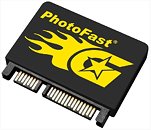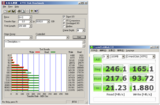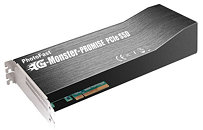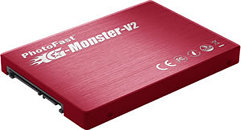PhotoFast Intros G-Monster V4 1.8-inch SSDs
PhotoFast announced three new solid state drives in the 1.8 inch form-factor. All three use IDE interfaces, and hence are ideal for consumer electronics such as PMPs, video cameras, etc. The new series these come under is the G-Monster V4. The drives offer capacities ranged between 32 and 256 GB (probably including 64 GB and 128 GB models along the way), and are characterized by the interface type: 40-pin ZIF, 44-pin IDE, and 50-pin IDE. All three feature MLC NAND flash chips, with 64 MB DRAM memory for the NAND flash controller. The controller offers a "Built-in Garbage Collection" feature that clears deleted data, relocating existing data onto its area. In this way, data fragmentation is reduced. The read-write speeds on offer are 128/90 MB/s, respectively.
















